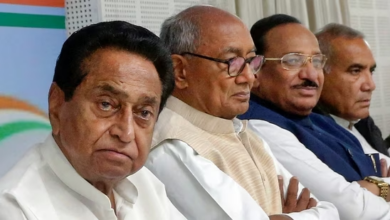The Various Methods of Selling Mortals for Profit in Human Trafficking
Several reports of Indian women being taken on a supposedly “extendable” tourist visa, held captive, their passports and cellphones taken, and then sold to locals for anywhere between Rs 80,000 and Rs 1.5 lakh or more surfaced in May of this year. The women were allegedly lured by agents under the pretense of jobs like “domestic help” and “caretaker” with good salaries in the Middle East. When prominent social media influencer Andrew Tate and his brother Tristan Tate were detained from their house in Bucharest, Romania, in December of last year, they were facing serious allegations of rape and trafficking in women. This incident garnered international attention. Last month, a conviction was reached. Both of these cases included human trafficking, a problem that has long been and still is a major issue on a worldwide scale.
Although Muscat and Oman have seen the majority of the recent incidents involving Indian women, migrant smuggling and human trafficking are widespread worldwide. People are still being trafficked throughout the globe and sold for monetary benefit despite increased monitoring.
Human trafficking: What is it?
Human trafficking is described as “the recruitment, transportation, transfer, harboring or receipt of people by force, fraud or deception, with the intention of exploiting them for profit,” by the UN Office on Drugs and Crime. These are organized groups or people that prey on weak, desperate, or just looking for a better life men, women, and/or children of all ages.
There are numerous various ways that human trafficking occurs, including sexual exploitation, forced labor, forced begging, debt bondage, domestic slavery, organ harvesting, and kidnapping for the military, among others. However, the UN has condensed it into three major groups. These include the removal of organs, trafficking in prostitution, and trafficking in labor.
Trafficking in sex
The recruitment and transportation of men, women, and children of all ages into the multibillion-dollar international sex business is the most common kind of human trafficking worldwide. All genders are affected by sex trafficking, although violence against women and children is disproportionately prevalent. Prostitution, pornography, child sex rings, nude dancing, modeling, and other forms of forced servitude are included.
labor exploitation
The criminal practice of involuntary servitude known as forced labor or labor trafficking sometimes goes unreported by the general population. During the colonial period, as well as under the totalitarian regimes of Nazi Germany and the Soviet Union under Stalin, labor trafficking was very common. Debt bondage, sometimes known as peonage (the slavery of persons for unpaid debts), domestic servitude, begging, and forced labor at farms, sweatshops, hotels, and restaurants are a few forms of labor trafficking.
The use of minors as spies and soldiers is another kind of labor trafficking; it is often used in hostile and war-torn nations. These kids are taken away from their families and made to work as front line soldiers, cooks, guards, maids, messengers, and porters.
Organ dissection
Using deceptive promises to lure victims into selling their organs is one of the more recent crimes associated with human trafficking. The UN claims that organ receivers pay a far greater price than donors do, with a portion of that price going to brokers or agents, ambulance drivers, doctors, and hospital directors who are allegedly part of the organized network. Trafficking of human organs occurs frequently in several regions of India. Many times, the donor is kidnapped and operated on even if they are not aware they are being trafficked.
Bones, blood, and bodily tissues are traded on this underground market all over the globe, and kidneys are the most often trafficked organ year after year.
Global Report on Human Trafficking by the UN for 2022
In 2020 (the most recent year for which data is available), the number of trafficking victims was found decreased by 11%, marking the first decrease in 20 years, although it is anticipated that the Ukraine conflict has resulted in a fresh rise.
Additionally, it was said that the susceptibility to trafficking is growingly being caused by climate change. “While a systematic global analysis of the impact of climate change on trafficking in persons is lacking, community level studies in different parts of the world point to climate-induced disasters as the root causes for trafficking in persons,” the UNODC report, which was issued on January 23, 2023, noted.
The UN research examined instances discovered between 2018 and 2021 by tracking trafficking movements and trends across 141 countries.
Even if there have been fewer documented occurrences of trafficking globally, there is still a need for ongoing, coordinated measures to strengthen government assistance and legal protections for anti-trafficking actions so victims of such abuse won’t have to depend on self-rescue.
Furthermore, governments can protect victims and end the issue by making a consistent effort to work with the international community and support the prosecution of traffickers.







